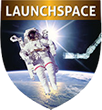Course Details
Course Summary
New all-cryogenic launch vehicles are being added to the world's stable at a rapid rate. Delta 4, Ariane V, H-2, and others are joining the STS and a number of upper stages in using liquid hydrogen and oxygen propellants. Liquid oxygen is also a key propellant when used with hydrocarbon fuels. Cryogenic (low temperature) propellants have characteristics that require unique design solutions and extended analyses of their behavior. This class, starting from the basis of the instructor's Propulsion Systems for Launch Vehicles course, presents a deeper understanding of cryogenic propellants and how they are used to increase performance. Emphasis is placed on actual hardware and the experience base of Saturn, STS, and DC-S type vehicles. The particular problems of using cryogenic propellants in low-gravity conditions are covered in some detail. Applicability to both expendable and reusable vehicles is discussed. Newer technology including the use of composite materials and densified propellants is also covered.
Course Materials
Include extensive notes and reference materials.
Who Should Attend
Engineers and designers involved with cryogenic vehicle and ground system design. System, maintainability and safety engineers who wish to increase their background knowledge of the propellants with which they work. Basic knowledge of thermodynamics would be helpful.
What You Will Learn
Cryogenic rocket engine performance characteristics. Behavior of cryogenic rocket engine performance characteristics. Behavior of cryogenic fluids including boiloff, flow characteristics and thermodynamics. Kinds of vehicle and flight systems needed to safely handle these fluids. Types of components and instrumentation used to control these fluids. Behavior of cryogenic fluids in orbit. Venting, settling, repressurizing and transfer methods.
Course Outline
- Basic Rocket Performance.
Specific impulse and density impulse. C* and CF. Expansion ratio and mixture ratio studies. Performance comparison to other propulsion options. - Cryogenic Propellant Characterisitics.
Boiloff and heating. Two-phase behavior. Heat transfer. Sub and supercritical storage. Safety and environmental issues. Ortho and para hydrogen. Slush and subcooled propellants. - Cryogenic Engine Cycles.
Expander, gas generator and staged combustion alternatives. Advantages and disadvantages. Applicable design limitations. Chill and start requirements. - Existing Cryogenic Engines.
Performance and weights. Availability and uses. Comparison of American, Russian, European and Japanese designs. - Vehicle Systems Performance.
Chilldown, feed systems and engine interface requirements. Venting. Pressurization and ullage control. Design options. Purge requirements. - Low Gravity Topics.
Venting and propellant settling. Boiloff and insulation. Propellant control. Chill and repressurization requirements. Debris control. - Component Design.
Insulation. Flexibility provisions. Seals, mechanical and bonded connections. Typical components. Leakage, Instrumentation requirements. - Ground Systems.
Supply tankage sizing. Quantity distance. Fault diagnosis. Vehicle and engine handling.
Instructor
David Mohr has an international reputation as a rocket engine designer and propulsion systems lecturer. He designs and evaluates thermodynamic cycles for air-breathing, nuclear and rocket powerplant systems; and builds rocket engine components. Mr. Mohr has developed an innovative liquid rocket ignition device for reliable high-altitude-ignition. He provides rocket propulsion design, analysis, fabrication and test expertise to many aerospace companies such as Applied Astronautics, Hybridyne Aerospace, Lockheed-Martin and Aerojet. Early in his career, he assisted Rocketdyne in developing the Space Shuttle Main Engine (SSME). One current project is the development of a liquid oxygen turbopump for a new, high-pressure propulsion system. Mr. Mohr fabricates and tests rocket engines and fluid pumping machinery in his own facilities. He has lectured at numerous commercial and government facilities including NASA's Stennis Space Center and Italy's FiatAvio. Mr. Mohr has contributed sections to the Handbook of Turbomachinery and the Handbook of Machinery Dynamics.
